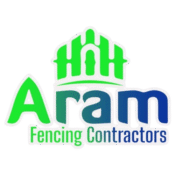Living near the coast has its perks — stunning views, fresh sea breeze, and relaxing vibes. But when it comes to fencing your beachside property, the salty air and moisture can be harsh on traditional materials, leading to rust, rot, and rapid degradation.
In this blog, we explore salt-resistant fencing options, best practices, and maintenance tips to ensure your fence stands strong against the challenges of a coastal climate.
1. Why Standard Fencing Materials Fail Near the Sea
Coastal regions face:
High salinity in the air causing rapid metal corrosion
Excessive humidity and moisture that weakens wood
Heavy winds and storms that test the strength of installations
Constant exposure to UV rays fading paint and plastic
2. Best Salt-Resistant Fencing Materials
Here are the top materials recommended for fencing coastal homes, resorts, and lands:
1. uPVC / Vinyl Fencing
100% rust-proof and waterproof
UV-resistant and requires little to no maintenance
Ideal for both decorative and privacy fencing
2. Galvanized & Powder-Coated Steel
Galvanization (zinc coating) prevents rust
Powder coating adds an extra weather-resistant layer
Widely used for chain link and grill fencing in seaside areas
3. Stainless Steel (Grade 316 Preferred)
Superior corrosion resistance
Perfect for high-end properties and institutional fencing
Common in gates, hinges, and fasteners
4. Precast Concrete Fencing
Completely immune to salt and moisture
Strong, secure, and ideal for long-term use
Suitable for boundary walls, government properties, and warehouses
5. Pressure-Treated or Sealed Hardwood
If wood is preferred, use teak, sal, or pressure-treated wood
Must be sealed with marine-grade sealants to resist rot and warping
3. Material Comparison Table
| Material | Salt Resistance | Lifespan (Years) | Maintenance Level |
|---|---|---|---|
| uPVC / Vinyl | Excellent | 15–25+ | Very Low |
| Galvanized Steel | Good | 10–15 | Medium |
| Stainless Steel | Excellent | 20–30 | Low |
| Concrete Panels | Excellent | 25+ | Very Low |
| Treated Wood | Moderate | 5–10 | High |
4. Installation Tips for Coastal Areas
Use concrete foundations or footings to stabilize poles in soft, sandy soil
Choose non-corrosive fasteners and fittings (stainless steel or coated)
Leave space between panels for wind to pass through, reducing pressure
Apply anti-rust paint or sealant annually on exposed surfaces
5. Maintenance Recommendations
Even salt-resistant materials benefit from routine care:
Rinse fences regularly with fresh water to remove salt deposits
Inspect for early signs of rust or cracks every 6 months
Repaint or recoat metal fences once a year
Trim nearby plants to avoid moisture buildup and algae growth
6. Ideal for These Coastal Properties
| Property Type | Recommended Fence Material |
|---|---|
| Beach House / Villa | Vinyl or Stainless Steel |
| Resort / Homestay | Precast Concrete with Gate System |
| Fishing Farm / Boat Yard | Galvanized Chain Link with Concrete Poles |
| Government Buildings | RCC Compound Wall with Concertina Coil |
| Seaside Warehouse | Powder-Coated Steel Fencing |
Conclusion
Fencing a coastal property requires smart material choices, proper installation, and preventive maintenance. Salt-resistant fences not only protect your land and structures but also enhance the beauty and security of your property for years to come.
